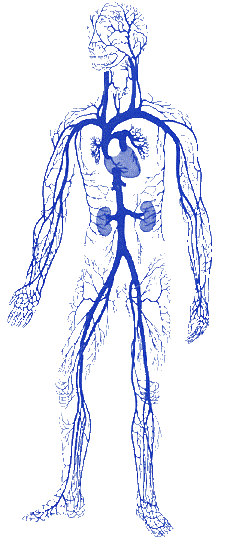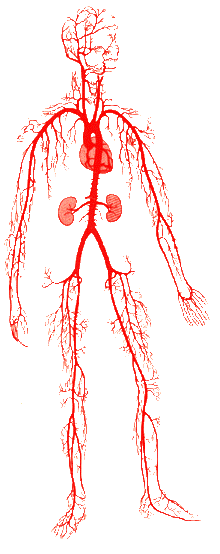Bleeding, technically known as hemorrhaging, is the loss of blood escaping from the circulatory system. Bleeding can occur internally, where blood leaks from blood vessels inside the body, or externally, either through a natural opening, or through a break in the skin. Typically, a healthy person can endure a loss of 10-15% of the total blood volume without serious medical difficulties.
Three Main Types of Bleeding
Capillary Bleeding - Capillaries are the smallest blood vessels in your body; they are about as thin as the hairs on your head.
When a minor scrape or cut opens some capillaries, the bleeding is almost always very slow and small in quantity. Your body's natural clotting mechanism is able to stop most cases of capillary bleeding within seconds to minutes.
Venous Bleeding - Deep cuts have the potential to cut open veins. A cut vein typically results in a steady but relatively slow flow of dark red blood.
The best way to stop most cases of venous bleeding is to put direct pressure on the wound.
Arterial Bleeding - This is the least common and most dangerous type of bleeding. It involves bright red blood that comes out in large volume, and in spurts that correspond with each beat of your heart.
In most cases of arterial bleeding, direct and extremely firm pressure on the wound is the best way of stopping it. If direct pressure is not applied, a severe arterial wound can cause you to bleed to death within a few minutes.
Stopping Bleeding
If possible, before you try to stop severe bleeding, wash your hands to avoid infection and put on gloves.
- Have the injured person lie down and cover the person to prevent loss of body heat. If possible, position the person's head slightly lower than the trunk or elevate the legs and elevate the site of bleeding.
- While wearing gloves, remove any obvious dirt or debris from the wound. Don't remove any large or more deeply embedded objects. Your principal concern is to stop the bleeding.
- Apply pressure directly on the wound until the bleeding stops. Use a sterile bandage or clean cloth and hold continuous pressure for at least 20 minutes without looking to see if the bleeding has stopped. Maintain pressure by binding the wound tightly with a bandage or clean cloth and adhesive tape. Use your hands if nothing else is available.
- Don't remove the gauze or bandage. If the bleeding continues and seeps through the gauze or other material you are holding on the wound, don't remove it. Instead, add more absorbent material on top of it.
- If the bleeding doesn't stop with direct pressure, apply pressure to the pressure points delivering blood to the area. Squeeze the main artery in these areas against the bone. Keep your fingers flat. With your other hand, continue to exert pressure on the wound itself.
- If the wound is abdominal and organs have been displaced, don't try to push them back into place - cover the wound with a dressing.
- Immobilize the injured body part once the bleeding has stopped. Leave the bandages in place and get the injured person to the emergency room as soon as possible.

Veins
Internal Bleeding
Internal bleeding can be much more difficult to identify. It may not be evident for many hours after it begins, and symptoms may only occur when there is significant blood loss or if a blood clot is large enough to compress an organ and prevent it from functioning properly.
Signs of internal bleeding may include
- Bleeding from body cavities
- Vomiting or coughing up blood
- Bruising on neck, chest, abdomen or side
- Wounds that have penetrated the skull, chest or abdomen
- Abdominal tenderness, possibly accompanied by
rigidity or spasm of abdominal muscles
- Shock, indicated by weakness, anxiety, thirst or
skin that's cool to the touch
- Fractures
Treatment
- Check the victim's ABCs.
- If the victim has ABC complications, treat those first - ABCs always take priority.
- Call 911
- Treat for shock
- Assist the victim into the most comfortable position
- Monitor ABCs and vitals until emergency services arrives
Clean the Wound
Gently clean with soap and warm water. Try to rinse soap out of wound to prevent irritation. Don't use hydrogen peroxide or iodine, which can damage tissue.
Protect the Wound
Apply antibiotic cream to reduce risk of infection and cover with a sterile bandage. Change the bandage daily to keep the wound clean and dry.

Arteries


